Now Reading: 10 Fascinating Facts About Copperhead Snakes
-
01
10 Fascinating Facts About Copperhead Snakes
10 Fascinating Facts About Copperhead Snakes

In the diverse landscapes of North America, copperhead snakes evoke a unique blend of curiosity and caution. Among these, the copperhead snake stands out as a common and often misunderstood resident across the eastern United States. This guide aims to illuminate the fascinating world of Agkistrodon contortrix. It will demystify these prevalent reptiles and address common concerns regarding their identification, behavior, and the critical steps for safe coexistence. By exploring their unique characteristics and ecological contributions, individuals can gain a clearer understanding of these pit vipers. They can also learn how to interact safely within shared environments.
Fact 1: Masters of Camouflage and Distinctive Looks
Copperhead snakes are renowned for their exceptional camouflage. This is a primary reason why they are frequently unseen until accidentally encountered. Their body features dark brown or reddish crossbands, distinctively shaped like an hourglass or dumbbell. These bands appear wide along the sides of the body and narrow significantly at the center of the back.
The background body color varies. It ranges from light brown, coppery, or tan to grayish or even pinkish-tan. This coloration allows them to blend seamlessly into leaf litter, rocky terrain, and wooded environments.Their remarkable ability to disappear into their surroundings is a significant factor. It contributes to accidental human encounters and subsequent defensive bites.
The effectiveness of their camouflage directly increases the likelihood of accidental physical contact. Such contact then triggers the snake’s defensive strike. This highlights the importance of vigilance in their habitats, rather than focusing solely on the snake’s perceived aggression.
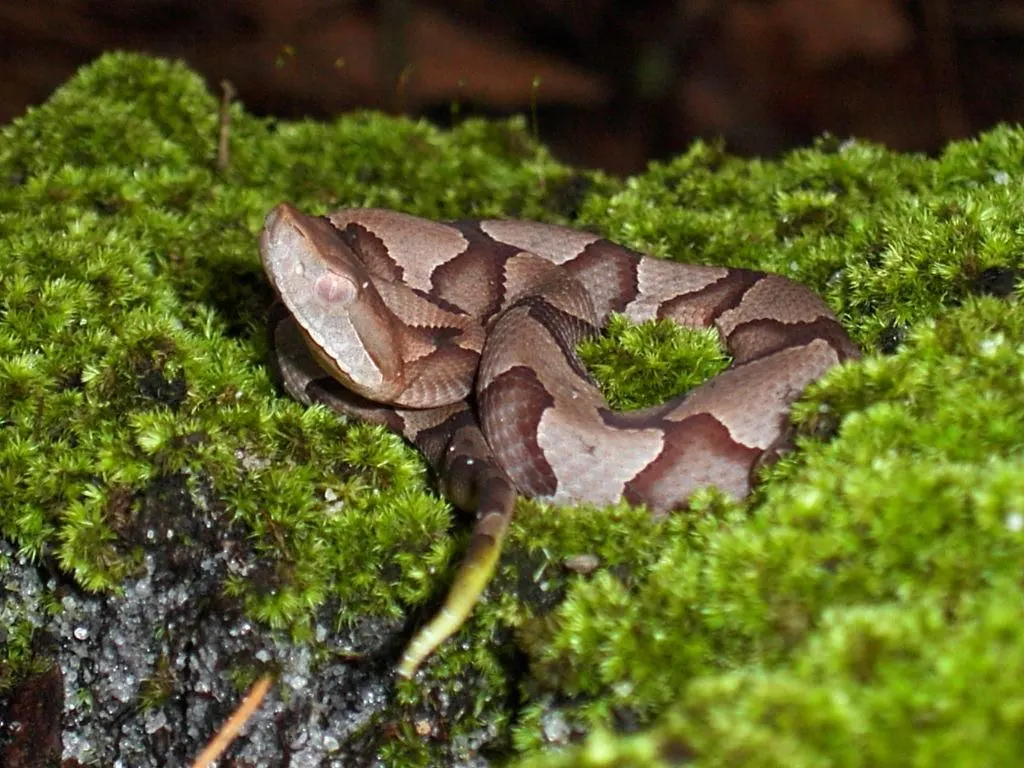
Distinctive Markings and Coloration (copperhead snakes)
The common name “copperhead” comes from their relatively unmarked, copper-colored head. This is a key identification feature.Like other venomous pit vipers, copperhead snakes have a broad, triangular, or spade-shaped head. It is distinctly wider than their neck.Their eyes feature vertical, elliptical pupils, similar to a cat’s eye.
A crucial characteristic of pit vipers is the presence of heat-sensitive pit organs. These are located on each side of their head, between the eye and the nostril. These specialized pits help copperheads detect objects warmer than their environment. This adaptation significantly aids in locating nocturnal, warm-blooded prey.Their scales are keeled, meaning each scale has a raised ridge running lengthwise.The belly color typically ranges from pink with darker marks to gray, or whitish/yellowish white, sometimes mottled with brown or gray blotches.
Juvenile Characteristics and Caudal Luring
Young copperhead snakes look slightly different from adults. They are generally grayer in body color and have a striking sulfur yellow or greenish-yellow tail tip.This bright tail coloration fades as the snake matures, usually disappearing by age 3 or 4.
This distinct yellow tail serves a dual evolutionary purpose. It acts as a clear identifier for humans. It is also a crucial, specialized hunting adaptation for the young. The yellow tail is actively wiggled to attract prey, particularly amphibians. This behavior is known as “caudal luring”.This provides a significant survival advantage for young, less experienced hunters. It mimics a worm or grub, luring prey within striking distance.
The tail’s fading as the snake ages suggests a shift in hunting strategies or preferred prey. As the snake grows, it becomes more capable of hunting larger, faster prey without lures. For humans, understanding this specific trait is vital for accurate identification and appropriate caution, as even newborns are venomous.
Fact 2: Widespread Across Eastern North America
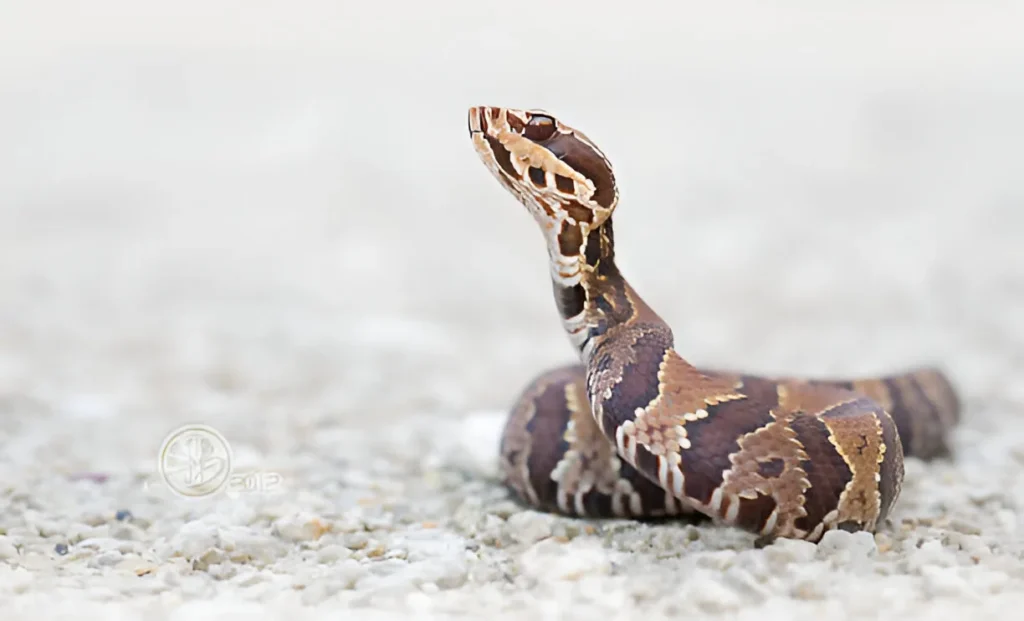
Copperhead snakes, scientifically known as Agkistrodon contortrix, are among the most common and widespread venomous snakes in the eastern United States. Their extensive range stretches from the Florida panhandle north to Massachusetts and extends westward into Nebraska.There are five recognized subspecies of copperheads.
The Northern Copperhead (Agkistrodon contortrix mokasen) has the broadest distribution among them.It is common for different subspecies to interbreed in areas where their geographic ranges overlap, such as the Southern and Northern Copperheads in Tennessee.
Adaptability to Habitats
These snakes exhibit remarkable adaptability. They thrive in a wide array of environments, from fully terrestrial landscapes to semi-aquatic habitats.Their preferred natural habitats include rocky, forested hillsides, wetlands, basalt ridges, talus slopes, and the edges of meadows. These often border marshes, streams, or swamps.
Copperheads are also known to inhabit human-modified environments. They can be found in abandoned and rotting wood or sawdust piles, construction sites, and increasingly, in suburban areas. Suitable hiding spots are available there.These adaptable snakes can climb into low bushes or trees to hunt prey. They also bask in sunny spots and even swim in water.
The copperhead’s high adaptability to diverse habitats, including suburban environments, drives frequent human-snake encounters and a high number of bites. Unlike some other venomous species restricted to wilderness, copperheads coexist and thrive near human development.
This directly increases the probability of human-snake interactions. This constant overlap in living spaces inevitably leads to more accidental encounters and, consequently, more bites. Preventing bites requires proactive measures within human-occupied spaces, such as managing landscaping and removing potential hiding spots, rather than solely relying on avoiding wilderness areas.
Fact 3: Not as Aggressive as You Might Think
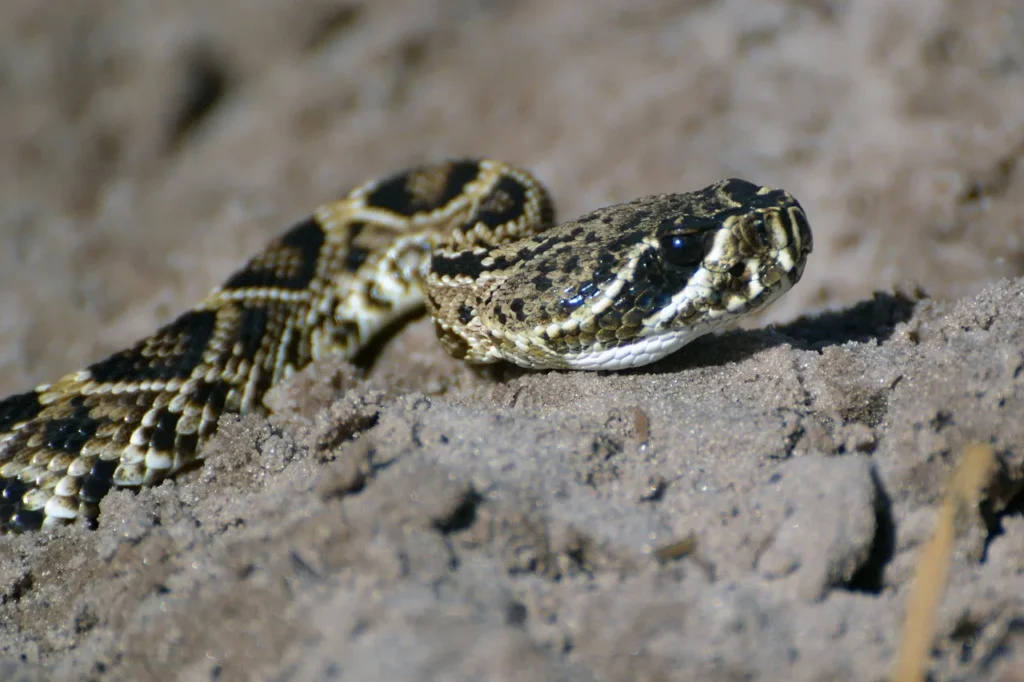
Despite their venomous nature, copperhead snakes are generally not aggressive towards people.Their primary defensive strategy is to remain perfectly still, relying on their exceptional camouflage to avoid detection. If approached, they will typically try to move slowly and quietly to conceal themselves further or slither away. When feeling truly threatened, a copperhead may react more defensively. This can include moving quickly, vibrating its tail rapidly (a behavior similar to rattlesnakes, though without the characteristic rattle sound), and striking repeatedly.
Understanding Bite Incidents
The vast majority of copperhead bites occur accidentally. This typically happens when a person unknowingly steps on or accidentally touches a well-camouflaged snake. The snake then strikes in self-defense.A significant percentage of bites also result from human interference.This occurs specifically when people attempt to capture, kill, or handle copperhead snakes.
Copperheads are known to perform “dry bites.” In these instances, they strike but do not inject venom. This behavior helps them conserve their valuable venom for subduing prey.The most effective way to prevent a copperhead bite is to simply leave the snake alone and maintain a safe, respectful distance.
The high incidence of copperhead bites is primarily a consequence of accidental encounters and human attempts to interfere with the snakes. It is not due to an inherent aggressive disposition. The snake’s defensive instinct, combined with its camouflage and increasing habitat overlap with human activity, means bites are almost exclusively a reactive response to a perceived threat. Human actions, often unintentional or misinformed, are the primary triggers for these defensive strikes.
This reframes the “danger” of copperheads from an aggressive predator to a defensive animal responding to perceived threats. It empowers individuals to prevent bites by understanding snake behavior, exercising caution in their habitat, and, most importantly, by not attempting to engage with them.
Fact 4: Venomous, But Rarely Fatal to Humans
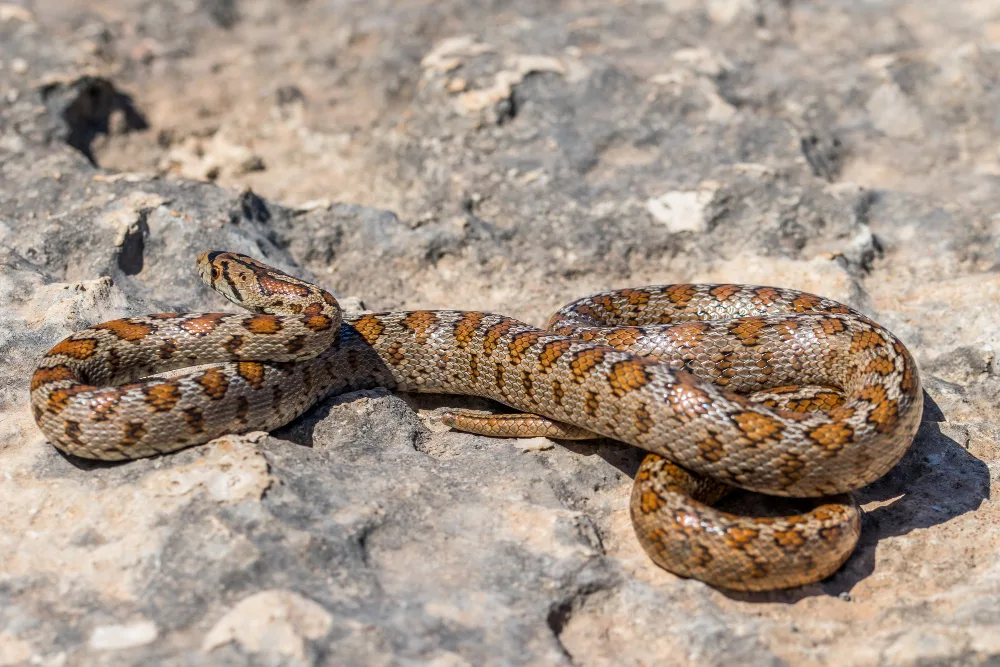
Copperhead snakes are indeed venomous pit vipers. They are equipped with hinged, recurved, hollow fangs located in the front of their upper jaw.These fangs release a hemolytic venom.Hemolytic venom primarily causes the breakdown of red blood cells. This leads to localized symptoms such as significant pain, swelling, and potential tissue damage around the bite site.It is important to note that copperhead venom is generally considered less potent than the venom of many other pit viper species found in North America.
Bite Statistics and Severity
Copperhead snakes account for a substantial number of venomous snakebites in the United States. They are responsible for approximately 25% of all venomous snake bites nationally. In some states like North Carolina, where they are particularly common, this figure exceeds 90%.
Despite these high bite statistics, a crucial fact for public reassurance is that copperhead bites are very rarely fatal to humans.However, a copperhead bite is always a serious medical event, even if not typically life-threatening. Victims can experience significant pain, swelling, and in some cases, tissue damage. This necessitates immediate medical attention.
The paradox of copperhead snakes causing a high percentage of venomous bites while having an extremely low fatality rate suggests a significant public understanding gap. The high number of bites stems from their widespread distribution and camouflage, leading to more frequent accidental encounters.
The low fatality rate, however, is directly attributable to their venom’s specific composition and potency. This highlights the need for a balanced and accurate public message: caution is necessary, and medical attention is vital for a bite, but widespread panic or aggressive eradication efforts are unwarranted. This perspective mitigates exaggerated fears without downplaying the need for medical care.
Fact 5: Born Ready: Venomous from Day One
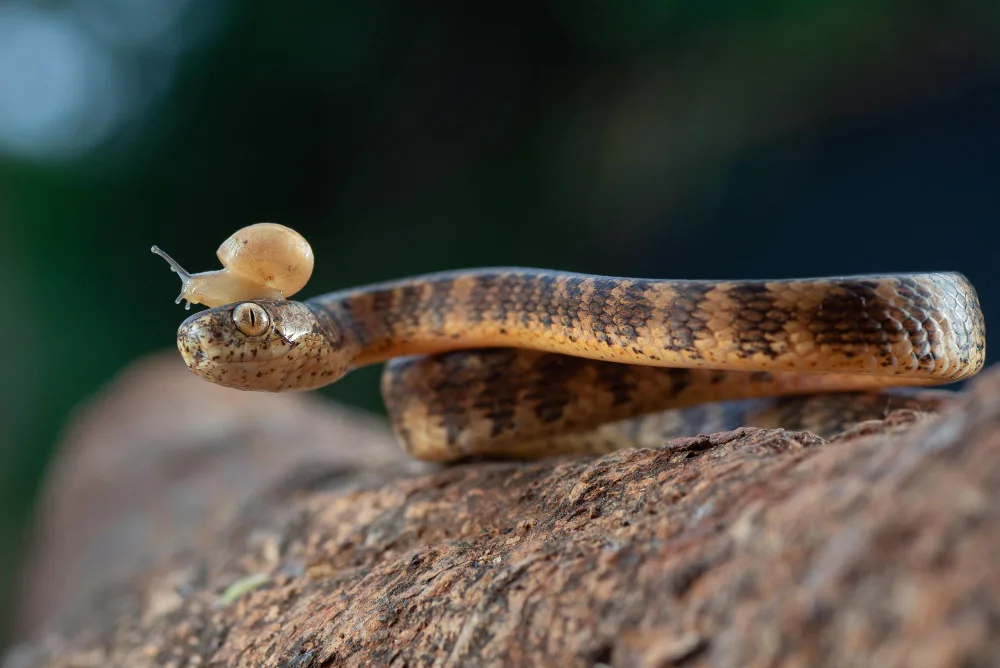
Copperhead snakes are unique in their reproductive strategy: they are ovoviviparous. This means the eggs remain inside the female’s body until they hatch, and the young are then born live.A remarkable aspect is that even just-hatched or newborn copperhead snakes are fully equipped with functional fangs. They are capable of injecting venom.
Contrary to a common misconception, the venom of baby copperheads is just as toxic as that of an adult copperhead. While they may deliver a smaller quantity of venom per bite, they are still capable of inflicting a medically significant bite. Like adults, young copperheads can also perform “dry bites” to conserve venom.Their fangs are replaced periodically throughout their lives, with multiple replacement fangs located in the gums behind the functional ones.
Caudal Luring: A Juvenile Hunting Tactic
Juvenile copperheads employ a fascinating and unique hunting strategy: “caudal luring.” They wiggle the bright yellow tip of their tail to mimic a worm or grub. This effectively lures unsuspecting prey, particularly amphibians, within striking distance.This specialized adaptation provides a significant advantage for young, less experienced hunters, enabling them to secure food efficiently.
The combination of live birth, immediate venom functionality, and specialized caudal luring in juveniles represents a highly evolved survival strategy. It ensures the early independence and success of the young, even without parental care. Live birth provides a head start over eggs. Immediate venom capability ensures effective prey capture. Caudal luring offers an efficient method for securing food when the young are small and vulnerable. This evolutionary package compensates for the lack of parental investment.
This highlights the biological efficiency and resilience of copperheads as a species, contributing to their widespread presence. It also reinforces a crucial message: even small, seemingly “cute” baby copperheads should be treated with the same caution as adults due to their fully functional venom apparatus.
Fact 6: A Diet of Rodents, Insects, and More
The primary diet of copperhead snakes consists of mice and small rodents. This makes them effective natural pest controllers.Beyond rodents, their diet is quite varied. It includes other small animals such as small birds, lizards, other snakes, and amphibians. They also feed on a variety of insects, with cicadas being a notable favorite.
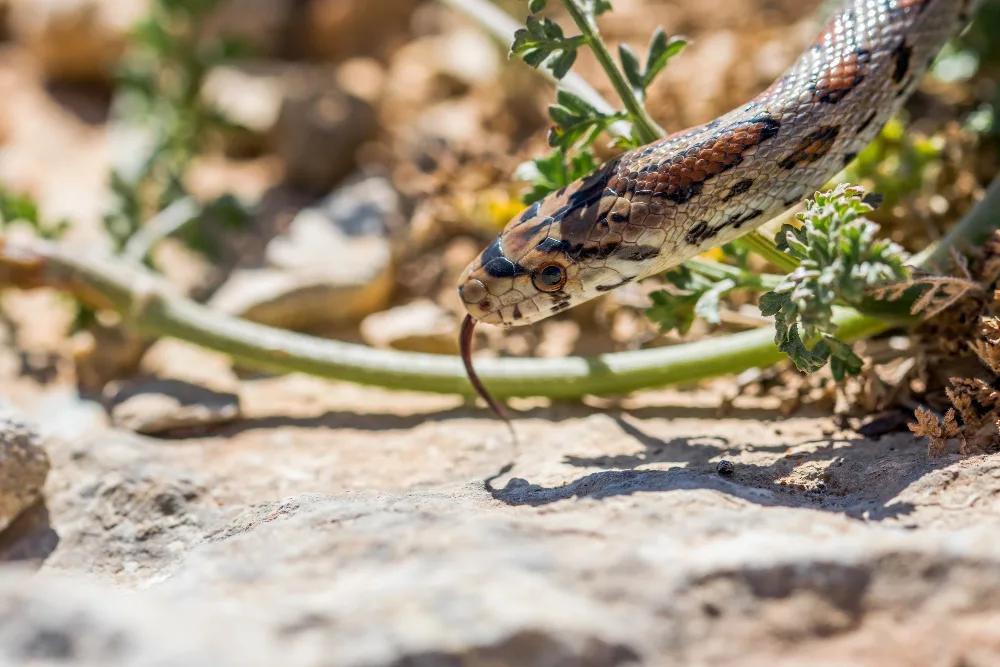
Copperhead snakes play a vital and beneficial role in natural pest control. This is particularly true through their consumption of rodents and insects. By actively preying on common agricultural and household pests, copperheads contribute significantly to maintaining ecological balance.
This natural pest control can reduce damage to crops, prevent the spread of rodent-borne diseases, and lessen the need for chemical pesticides. These actions indirectly benefit human health and economy. This provides a compelling argument for respecting and coexisting with copperhead snakes, shifting the focus from solely their potential danger to their valuable ecological contributions.
Hunting Strategies
Copperheads are ambush predators. They often lie motionless and camouflaged within leaf litter or under debris. They patiently wait for unsuspecting prey to pass by. After striking and injecting venom, they typically release their prey. Then, they track it by scent. This allows them to safely consume the incapacitated prey once the threat of retaliation has been removed.
Their hunting behavior adapts to environmental conditions. During the cooler nights of spring and autumn, copperheads primarily hunt during the day. However, in the intense heat of summer, they switch to nocturnal hunting. This shift helps them avoid overheating and increases their chances of success. Many of their prey, like rodents and amphibians, are more active at night.Their heat-sensitive pit organs are particularly effective for locating nocturnal, warm-blooded prey in the dark.
Fact 7: Unique Reproductive Cycle and Lifespan
Copperhead snakes are active from April through October. Their mating season occurs in both spring and autumn. During courtship, males locate females using their tongues to detect female pheromones in the air. Mating rituals can involve males moving their chins along the ground and attempting to place their head on the female’s body. Males may also engage in vertical combat with other males during mating season.
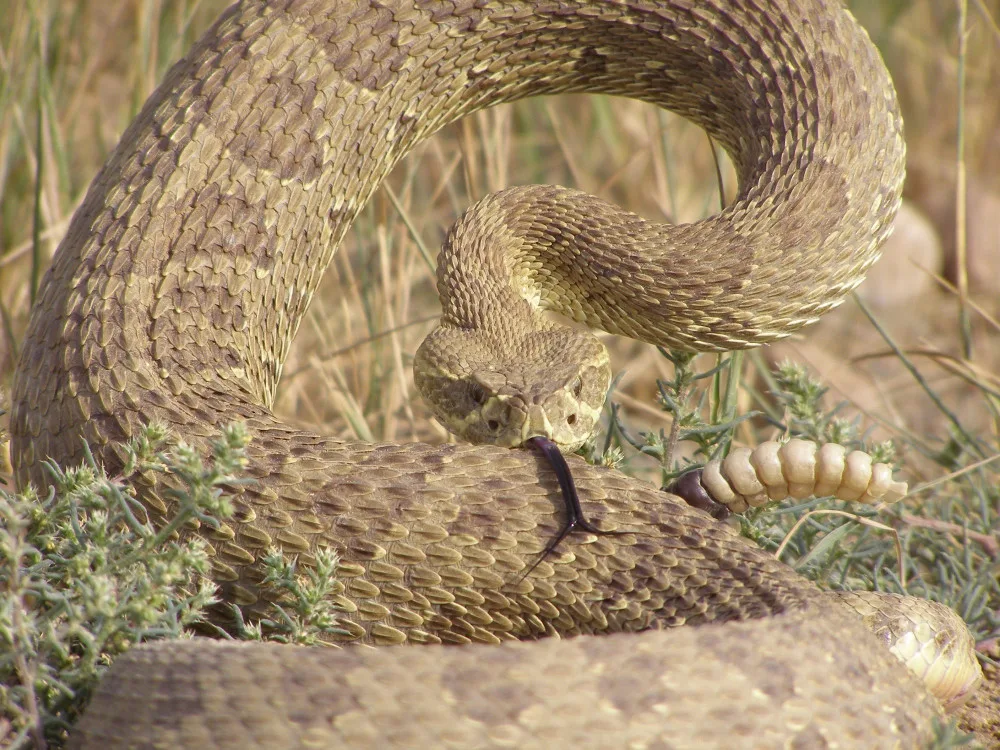
Copperheads are ovoviviparous. This means the eggs remain inside the female’s body until they hatch, and the young are then born live.Females give live birth to their young in late summer or early fall, typically between August and early October.Clutch sizes can range from 1 to 21 young, with an average of 4 to 7 offspring per litter.Females sometimes gather in communal “birthing rookeries” during this period.Importantly, the young are born fully developed and are not cared for by the adults; they must fend for themselves immediately after birth.
Lifespan and Hibernation
Copperhead snakes typically reach sexual maturity at approximately 4 to 5 years of age.They have a relatively long estimated lifespan in the wild, averaging around 18 years.During the colder months, from October to April, copperheads enter a period of inactivity. They gather in communal dens, known as hibernacula. These dens are often shared with other snake species.
The relatively long lifespan and specific reproductive strategy of copperhead snakes contribute significantly to their population stability and widespread presence. This holds true even in the face of habitat loss and human persecution. A longer lifespan allows individual females to contribute to the population over many breeding seasons. Live birth and the immediate independence of the young bypass vulnerable egg stages and parental investment. This increases the initial survival rate of offspring. Communal denning may provide safety in numbers during their most vulnerable, inactive period.
These combined factors provide a biological resilience that helps the species persist even under environmental pressures. This resilience means that copperheads will likely remain a common presence in their range. Therefore, human adaptation through education and prevention strategies is a more practical and sustainable approach than attempting eradication, which is often ineffective and ecologically harmful.
Fact 8: Often Mistaken for Harmless Lookalikes

Due to their cryptic coloration and widespread presence, copperhead snakes are frequently mistaken for other snake species, both venomous and harmless. Common harmless lookalikes include the black rat snake, garter snake, northern water snake, ringneck snake, Dekay’s or northern brown snake, milksnakes, and the Eastern Hog-nosed Snake.It is also important to differentiate them from other venomous pit vipers. Copperheads lack the distinctive rattle found on rattlesnakes and the stark white mouth interior characteristic of cottonmouth snakes (water moccasins).
Key Identification Features
The most reliable identifier for a copperhead is its unique hourglass or dumbbell-shaped crossbands. These are narrow at the center of the back and wide along the sides. This pattern is distinct from the blotches, rings, or stripes found on many other snakes.Look for the unmarked, coppery-colored head.Other key features include their triangular head shape, vertical pupils, and heat-sensing pits between the eye and nostril.Remember the bright yellow tail tip of juvenile copperheads; this is a clear sign of a young copperhead.
The frequent misidentification of copperhead snakes with harmless species contributes significantly to unnecessary fear and persecution. This undermines broader snake conservation efforts and increases the likelihood of dangerous human intervention. A lack of accurate identification skills among the public directly fuels a “kill on sight” mentality. This results in the needless killing of both beneficial, harmless snakes and copperheads themselves. It perpetuates a cycle of misinformation, fear, and ecological harm.
Effective public education on snake identification is paramount. It serves a dual purpose: enhancing human safety by accurately identifying potentially dangerous snakes, and promoting reptile conservation by preventing the killing of harmless species. This fosters a more informed and respectful relationship between humans and local wildlife.
Copperhead Identification at a Glance
| Feature | Copperhead Snake | Common Harmless Lookalikes (e.g., Milk Snake, Water Snake, Hog-nosed Snake) | Other Venomous Pit Vipers (e.g., Rattlesnake, Cottonmouth) |
| Head Shape | Triangular/Spade-shaped, distinct from neck | Oval/Rounded (Milk, Water Snake); Up-turned snout (Hog-nosed) | Triangular/Spade-shaped, distinct from neck |
| Pupil Shape | Vertical, elliptical (cat-like) | Round | Vertical, elliptical (cat-like) |
| Body Pattern | Hourglass/Dumbbell-shaped crossbands (narrow on back, wide on sides) | Blotches, rings, stripes, or solid coloration | Diamond, V, or M-shaped crossbars (Rattlesnake); Dark blotches/solid (Cottonmouth) |
| Tail Tip (Juvenile) | Bright yellow or greenish-yellow (fades with age) | No distinctive yellow tip | No distinctive yellow tip |
| Heat Pits | Present (between eye and nostril) | Absent | Present (between eye and nostril) |
| Other Distinctions | Unmarked coppery head | No rattle; No white mouth interior | Rattle (Rattlesnake); Stark white mouth interior (Cottonmouth) |
Fact 9: Crucial Role in the Ecosystem
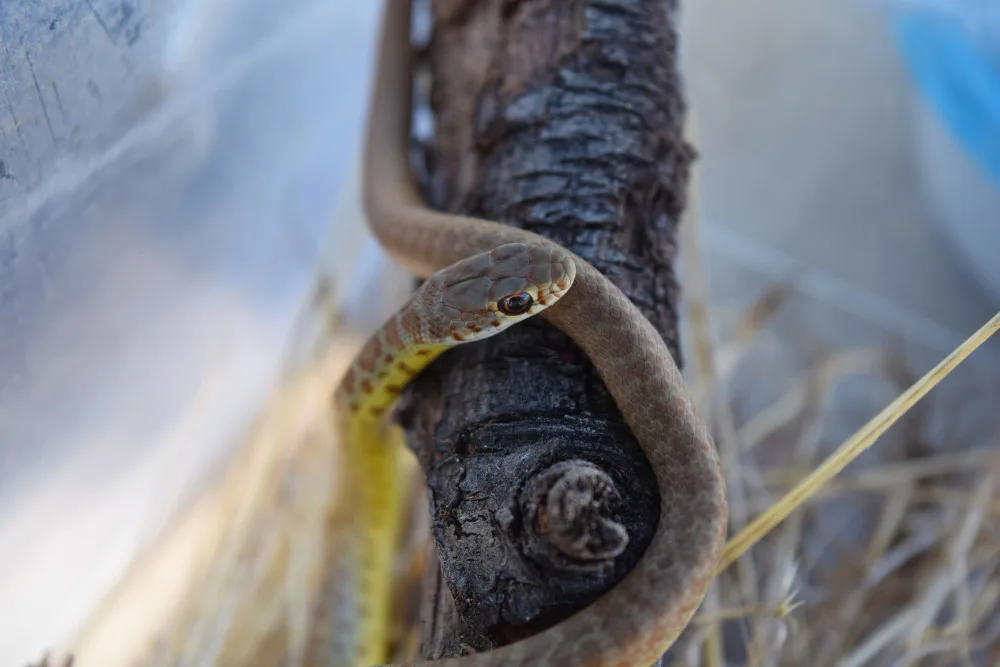
Beyond their reputation, copperhead snakes play a significant and beneficial role in their ecosystems. Their primary diet of rodents (like mice) and various insects (including cicadas) positions them as natural pest controllers.
By actively preying on common agricultural and household pests, copperheads contribute significantly to maintaining ecological balance. This natural pest control can reduce damage to crops, prevent the spread of rodent-borne diseases, and lessen the need for chemical pesticides. These actions indirectly benefit human health and economy. This provides a compelling argument for respecting and coexisting with copperhead snakes, shifting the focus from solely their potential danger to their valuable ecological contributions.
Conservation Status and Threats
In many areas, copperheads are classified as a “nongame species.” This means there is no open hunting season for them, and regulations exist regarding their collection or possession.Despite their adaptability, copperhead populations face threats. These include habitat loss due to quarrying, development, and human encroachment into their natural areas. Road mortality, particularly during breeding seasons when snakes are more active, also significantly impacts their numbers. Furthermore, intentional killing by humans, driven by fear and misunderstanding, continues to reduce their densities.
Copperheads are also an important part of the food web. They serve as a food source for various other animals, including foxes, raccoons, bears, eagles, hawks, and owls. This highlights their integral role in supporting a healthy and diverse ecosystem.
While frequently feared and persecuted, copperhead snakes are integral components of healthy ecosystems. Human actions that lead to their decline can have unintended negative ripple effects on local food webs and pest populations. The removal or reduction of copperhead populations, whether through habitat destruction or direct killing, disrupts the delicate balance of predator-prey relationships.
This can lead to an increase in their prey species (e.g., rodents, insects) and can negatively impact the populations of animals that rely on copperheads as a food source. This reinforces the “respectful coexistence” message. It frames conservation not merely as an ecological ideal but as a practical benefit to human environments. It encourages a shift from a “kill on sight” mentality to one of understanding and avoidance, recognizing the broader ecological consequences of human actions.
Fact 10: What to Do If You Encounter One (or Get Bitten)

The most important rule when encountering a copperhead snake is to maintain a safe, respectful distance. Do not approach, provoke, or attempt to handle the snake.If a copperhead is in an undesirable location on your property, a gentle stream of water from a garden hose can often encourage it to move away without harm.Remember, leaving them alone is the best way to prevent a bite.
Emergency First Aid for Bites
If a copperhead snake bite occurs, the absolute priority is to call 9-1-1 or your local emergency services immediately. Do not waste time looking for or trying to catch the snake.While waiting for help, stay calm and reassure the person who has been bitten. Panic can worsen symptoms.
Lay or sit down with the bite in a neutral, comfortable position. Keep the injured area as still as possible and, if practical, lower than the heart.Remove any rings, watches, or tight clothing from the bitten limb before swelling begins. Swelling can make removal difficult and cause constriction.
Gently wash the wound with soap and water to clean it.Cover the bite with a clean, dry dressing.If possible, mark the leading edge of any tenderness or swelling on the skin and write the time next to it. This helps medical professionals track the progression of the venom.If it can be done
from a safe distance without risk, take a photograph of the snake. This can aid in identification and faster treatment, but never prioritize this over immediate medical help.It is crucial to understand what not to do. Waiting for symptoms to appear is not advisable; seek immediate medical help regardless of initial symptoms.Avoid applying a tourniquet, as this can concentrate venom and lead to severe tissue damage or limb loss.Refrain from applying ice or immersing the wound in water, as this can worsen tissue damage.
Do not cut the wound, try to suck out the venom, or use electric shock. These methods are ineffective and can cause further harm or infection.Do not drink alcohol as a painkiller or take pain relievers like aspirin, ibuprofen, or naproxen, as they can interfere with medical treatment or worsen bleeding.
The prevalence of harmful folk remedies for snakebites, explicitly listed as “don’ts” by authoritative sources, indicates a critical public health literacy gap. Misinformation can lead to significantly worse outcomes than the bite itself. The continued belief in and application of ineffective or harmful folk remedies can delay or prevent individuals from seeking proper medical care.
This delay, combined with the physical harm caused by the remedies themselves, can exacerbate the effects of the venom. This leads to more severe pain, extensive tissue damage, or long-term disability. This section is not just about instructing what to do but critically about actively debunking dangerous myths about snakebite first aid.
Seeking prompt emergency medical attention is vital because antivenom, if determined to be necessary by medical professionals, can stop irreversible damage, help limbs recover faster, and significantly reduce the chance of long-term disability.
Copperhead Bite First Aid: Do’s and Don’ts
| DO | DON’T |
| Call 9-1-1 immediately. | Don’t pick up or try to trap the snake. |
| Stay calm and reassure the person. | Don’t wait for symptoms to appear. |
| Keep injured area still and lower than heart. | Don’t apply a tourniquet. |
| Remove rings/watches before swelling. | Don’t apply ice or immerse in water. |
| Wash wound with soap and water. | Don’t cut the wound or try to suck venom. |
| Cover bite with clean, dry dressing. | Don’t use electric shock or folk therapies. |
| Mark swelling edge and write time. | Don’t drink alcohol or take pain relievers (aspirin, ibuprofen). |
| Take photo of snake from safe distance (if possible). | Don’t drive yourself to the hospital. |
Frequently Asked Questions (FAQs)
Do copperheads swim?
Yes, copperhead snakes are capable swimmers and are often found in semi-aquatic habitats. They inhabit areas near wetlands, marshes, streams, and swamps, and are known to swim in these water bodies.The ability of copperhead snakes to swim expands their potential range and increases the likelihood of human encounters in diverse environments, including recreational water bodies. Their aquatic mobility allows them to access prey and suitable habitats across water barriers, extending their territory beyond purely terrestrial areas. This means they can be encountered in or near ponds, lakes, and rivers, adding a layer of awareness for outdoor enthusiasts.
Are copperhead snakes the same as cottonmouth snakes?
No, copperhead snakes and cottonmouth snakes (also known as water moccasins) are distinct species, although both belong to the pit viper family and share some general similarities. Key differences include: Copperheads have their signature hourglass-shaped crossbands and an unmarked coppery head. Cottonmouths are typically darker in coloration, found primarily near water, and famously display a stark white interior of their mouth when threatened, giving them their name.Accurate identification is crucial, as cottonmouth venom is generally considered more potent than copperhead venom, requiring immediate and potentially more intensive medical intervention.
Do baby copperheads have more potent venom than adults?
No, this is a common and dangerous myth. The venom of baby copperhead snakes is just as toxic and potent as that of an adult copperhead. While a baby copperhead may inject a smaller quantity of venom per bite due to its size, its fangs are fully functional, and the venom itself is equally effective. Like adults, young copperheads can also perform “dry bites” where no venom is injected.The perceived danger from young copperheads often stems from their small size, which makes them harder to spot, and their functional venom apparatus from birth.
Conclusion
Copperhead snakes, with their distinctive hourglass patterns and coppery heads, are widespread across eastern North America, adapting to diverse habitats including suburban areas. While venomous and responsible for many bites, these bites are rarely fatal to humans. They are generally non-aggressive, striking mostly when accidentally encountered or provoked. From birth, they are equipped with functional venom and unique hunting tactics like caudal luring. These fascinating reptiles play a crucial role in the ecosystem as natural pest controllers, consuming rodents and insects. Understanding their behavior, accurate identification, and proper first aid are essential for safe coexistence.
By understanding these fascinating reptiles, individuals can foster a safer, more respectful coexistence with copperhead snakes in shared environments. Share this knowledge with friends, family, and community members to help demystify copperhead snakes, debunk common myths, and prevent accidental encounters. For more detailed information on snake identification and how to safely share your space with wildlife, explore comprehensive guides on snake identification and how to create a wildlife-friendly yard. In case of a snakebite emergency, always refer to expert medical advice. For detailed guidelines on venomous snake species and safety, visit the Centers for Disease Control and Prevention (CDC) website. For immediate first aid instructions, consult the American Red Cross.





















